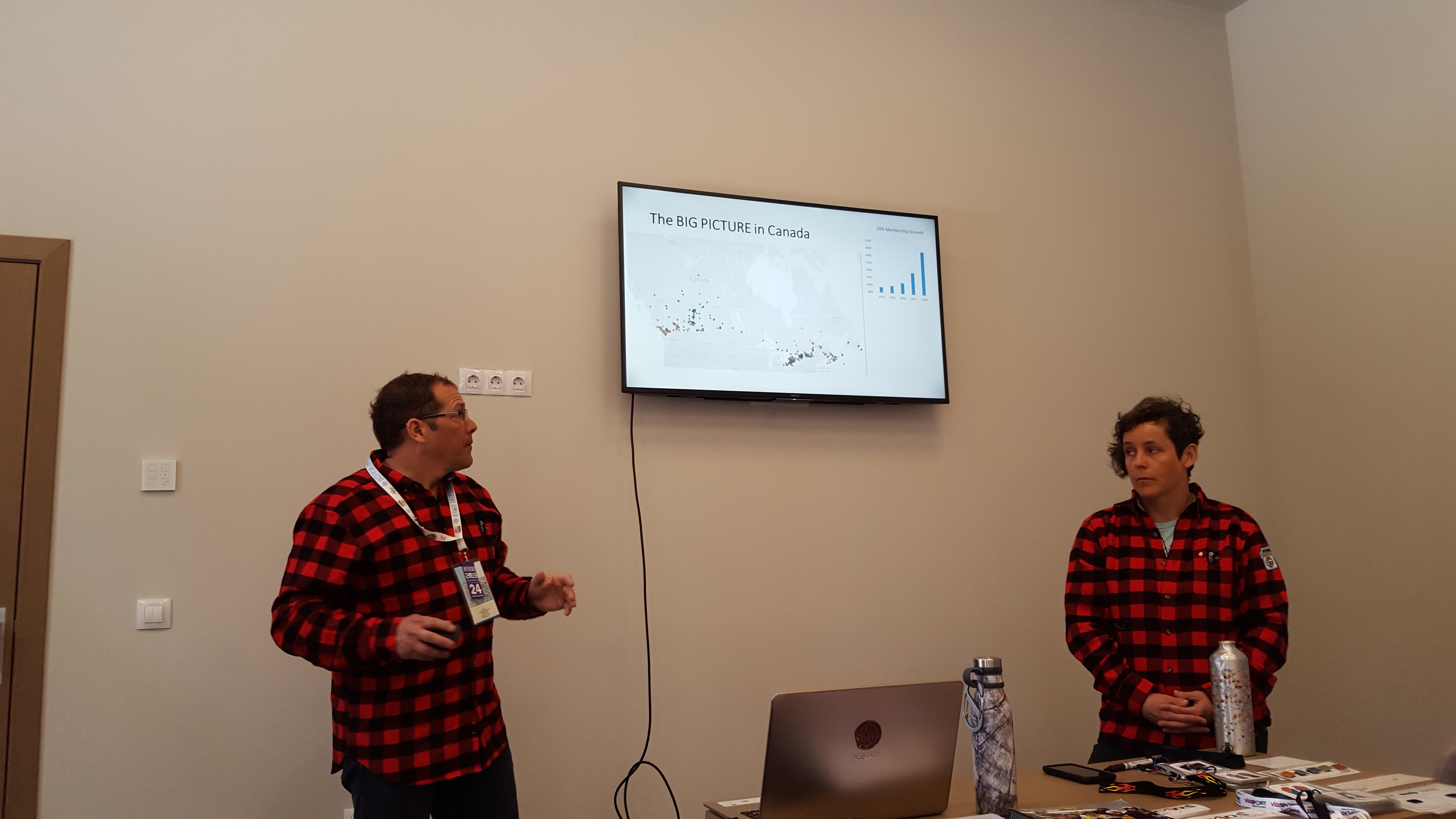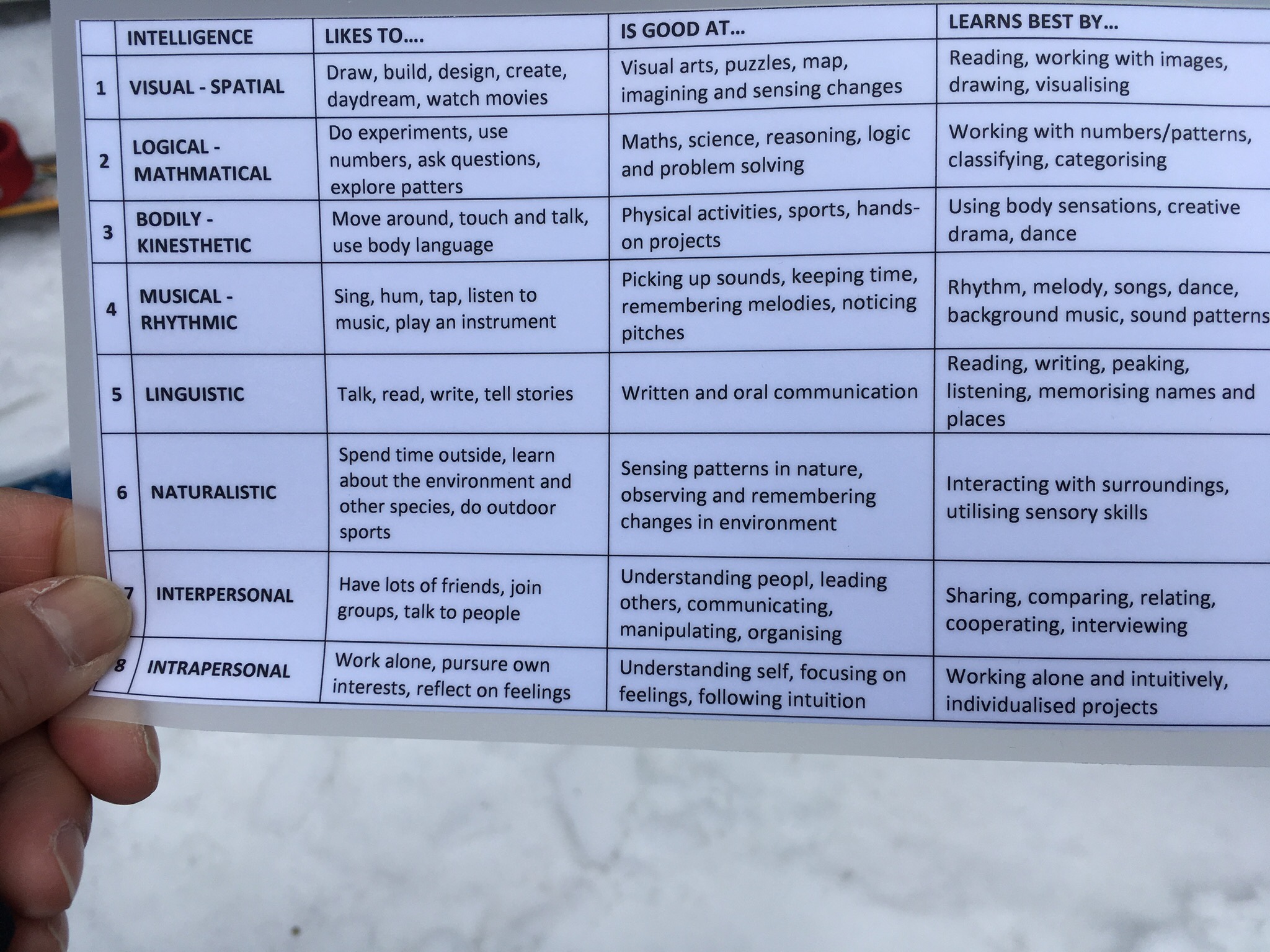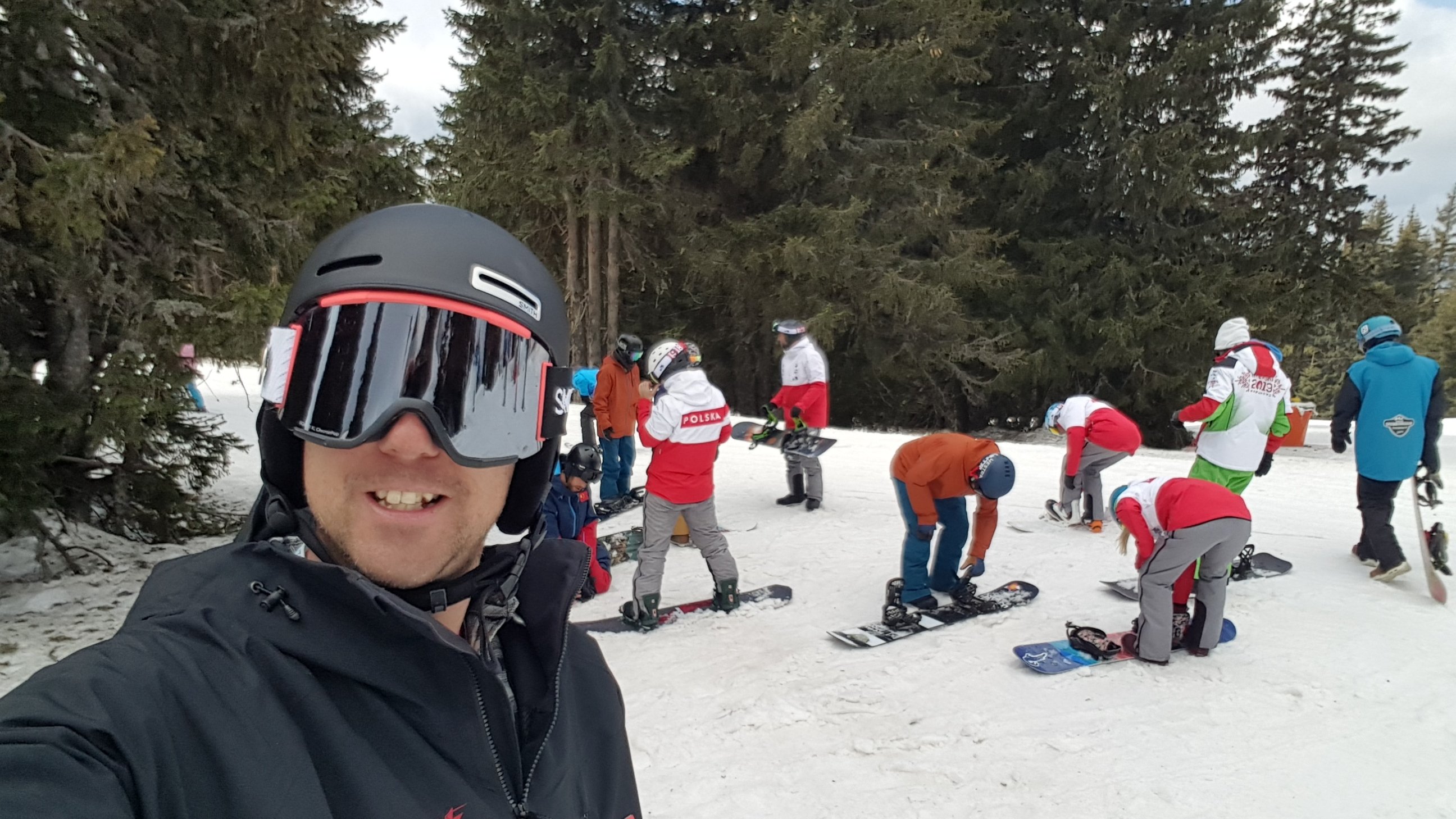Today was our turn to share with the world, we hosted workshops this morning and afternoon with a focus on sharing a little piece of our teaching methodology; the SAFE concept. We also hosted an indoor workshop where we gave an overview of our system, more on that later.
The SAFE concept is nothing new to us, it has been part of our course content for many years but sort of fell out of view slightly, overshadowed by many of our excellent teaching concept we’ve brought to the members in recent years, most notably the Competencies and the Practical Teaching Skills. The SAFE model provides a tangible lesson structuring tool for instructors to introduce, develop and refine new skills. Initially used as a beginner teaching technique, the SAFE model can be adapted to more advanced manoeuvres and concepts.
S: Explanation / Demonstration of the tactic. A: Practice in a controlled environment, lots of feedback. F: Mileage and Practice. E: Add variation to the movement (edge / slope / movement change).
5 of us presented this session today, offering different presentation style and giving almost all of us a chance to teach snowboarders from all over the planet, not an opportunity you get very often, if ever, for most of us. I headed out with 2 Americans, 2 Polish, 1 Australian, 2 Swiss and 2 Slovenian riders; incredible amount of knowledge in one group… slightly intimidating! The pressure to perform was definitely felt.
First step was to ensure understanding of the SAFE model by using a very basic piece of our Quickride, more specifically skating, every country has skating as part of their beginner “progression”, naturally, as it is how we all get around the flats and load any type of lifts, finding common ground on a manoeuvre was the objective to ensure a focus on the teaching methodology and not get caught up into a “we do it this way in our country” type of scenario. Once clear on the model, it was time to up the difficulty to keep everyone engaged, we settled on Short Turns, another consistent tasks amounts the various systems present in the group.
Static: The good old twist the disc analogy to use the feet to turn the board (turning with the lower body), while this tactic as almost as old as CASI itself, much to my surprise, not many had heard this analogy before. A black groomed run (albeit very slushy) was the venue. Time for a demo.
Active: Time for everyone to give it a try. Very interesting to observe the various movement patterns from different systems. Feedback is next… which had to be prefaced by “my goal is not to make you ride like me or the Canadian way” as this is not a CASI certification course, which brings an interesting dynamic within the group as you can tell they are comparing this to their own way of performing this task. Everyone was a good sport and gave it a try… lots of questions ensued.
Free: Time for mileage while guiding them safely. Very cool to watch that many high end riders tearing apart a slope and having a good time.
Experiment: Let’s add a variation. I started by giving them a variation to try. Building on twist the disc I had them attempt to twist one disc at a time, separating the turning effort between front and back foot relating them to phases of the turn. I then followed it up with having them come up with a variation of their own, lots of good stuff came out there and we all gave them a try accompanied by some great discussions.
With a bit of time left I took them to the park to discuss how this model can be applied to any riding environment and together we came up with a manoeuvre that we can apply to this model to; in this case ollies and nollies. For sake of time we skipped A and F and went right to E, having them do ollies and nollies on various features of their choice while cruising through the park, super fun way to wrap it up!
Well received, great times and discussions were had with everyone. I feel privileged to have been given this opportunity to present at Interski for the 3rd time, career highlights for sure, a huge thank you to you, the members, and the Interski comittee for giving us this opportunity.
Thank you CASI!
Luc Belanger




